In pictures
The Battle of Britain's 'hardest day'
In 1940 the Royal Air Force resisted major aerial attacks from Germany in what became known as the Battle of Britain. One moment is sometimes singled out as the ‘hardest day’ of the fighting – 18 August. One of the many sites targeted that day was Kenley, an airfield just south of London.
Map of fighter defences
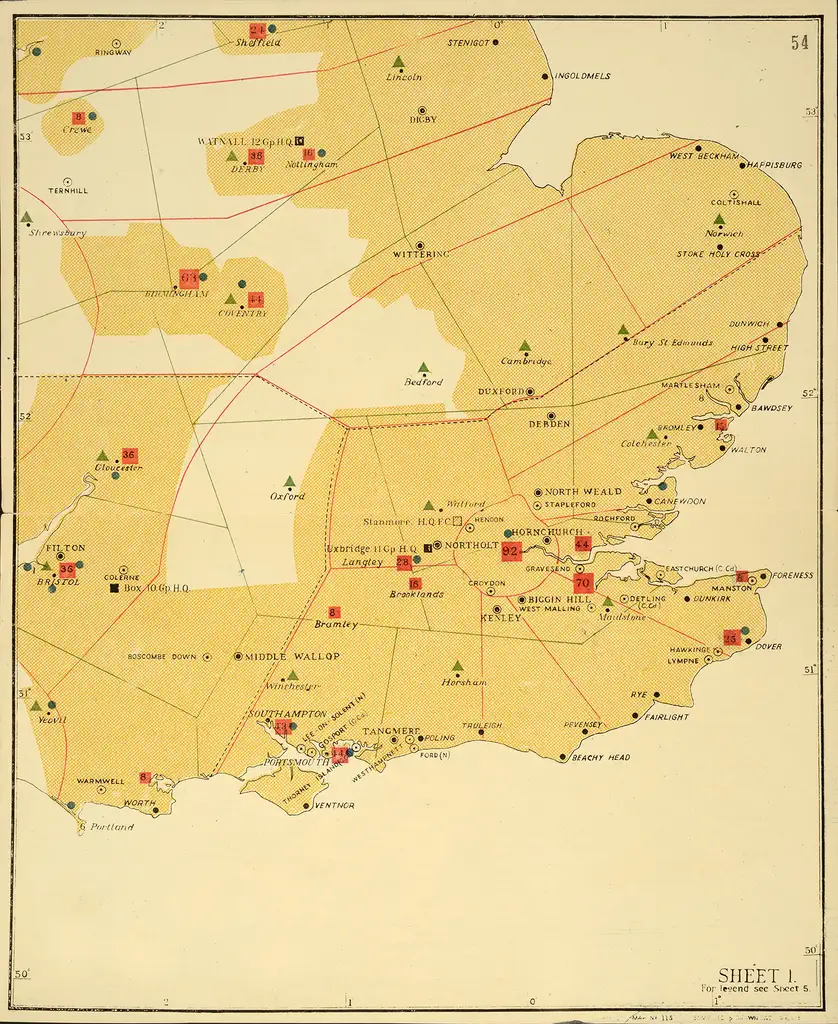
- Date
- 1940
- Catalogue reference
- AIR 41/16
This map shows the regional boundaries and key locations within the Royal Air Force (RAF) defence system. Kenley appears within the area of 11 Group (shown by the dotted line), which was responsible for defending the south-east of England. The satellite airfield at Croydon is nearby, as is Biggin Hill, in the adjacent sector.
The map was included with the appendices to a set of monographs about the air defence of Britain, prepared by the Air Historical Branch of the Air Ministry. The main volume about the Battle of Britain can be found at AIR 41/15.
Kenley Station operations record book with site plan
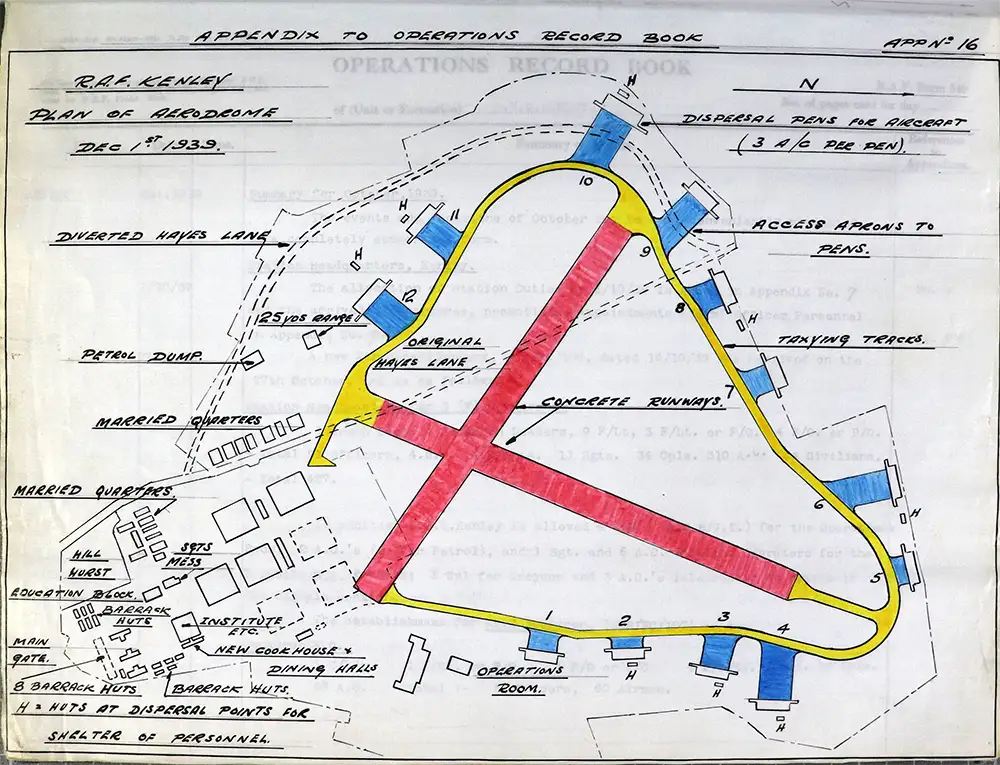
- Date
- December 1939
- Catalogue reference
- AIR 28/419
Operations record books are a very important source of information about the RAF and its history. They were widely used to record daily and monthly events and activities, sometimes with names of personnel included. Other kinds of material, such as this sketch, were added occasionally.
Kenley was a sector airfield, which meant that it controlled a group of fighter squadrons in a designated area south of London. Two squadrons were based there at the time of the attack on 18 August 1940, with a third at a satellite airfield at Croydon. The concrete runways (shown in red) had been completed in late 1939.
This document is part of a series which covers many other RAF stations, including the more well-known airfields at Biggin Hill and Duxford. They are listed by the name of the station.
HQ Fighter Command operations record book
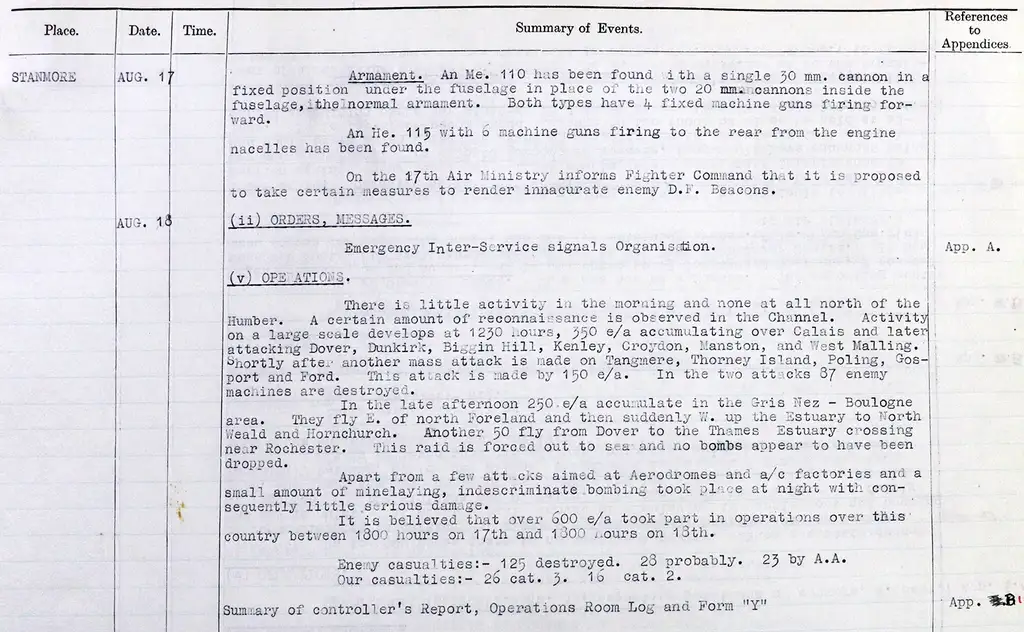
- Date
- August 1940
- Catalogue reference
- AIR 24/507
RAF Fighter Command controlled the squadrons defending Britain in 1940. This document includes a brief account of the overall activity on 18 August and names the targets attacked by German aircraft, including Kenley. Actual German aircraft losses on the day were about 69, lower than the number claimed here ('125 destroyed').
The document is part of the series covering RAF Commands, which represent the higher level of the RAF operational structure. Similar kinds of records exist for various other Commands and Headquarters at home and abroad.
Kenley operations record
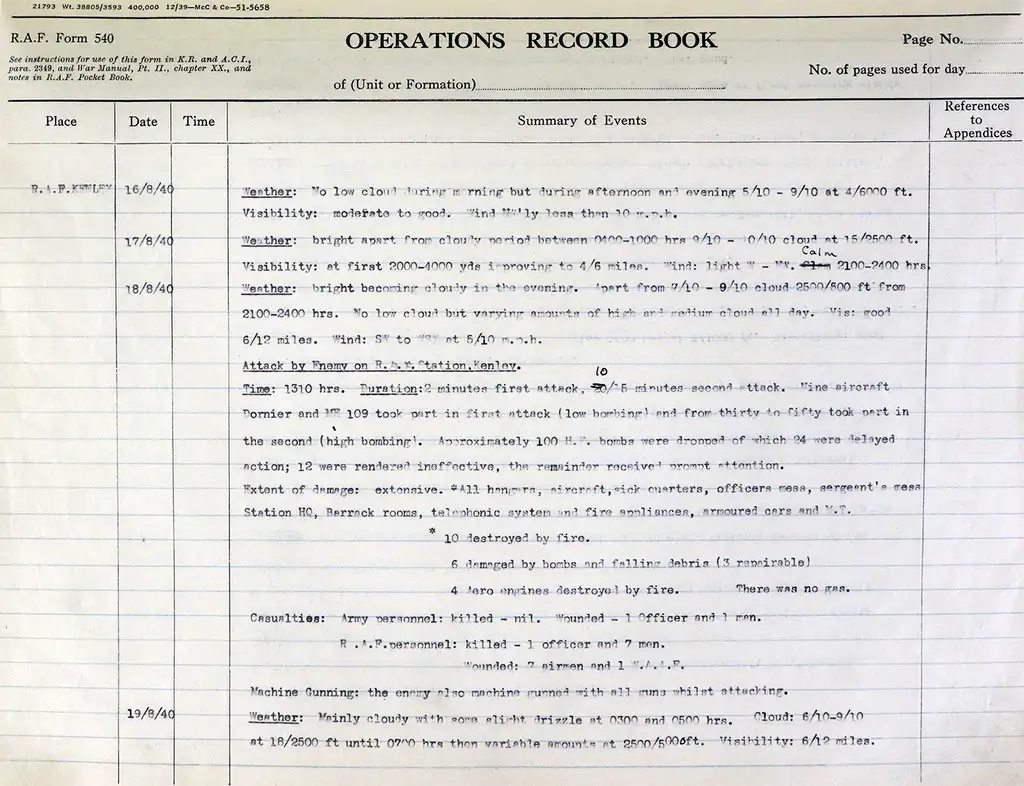
- Date
- August 1940
- Catalogue reference
- AIR 28/419
This page from the station operations record book summarises the attack on Kenley, which lasted only a few minutes altogether. The first German bomber squadron to reach the target flew at very low altitude from the coast near Beachy Head, in an attempt to avoid detection. The remainder of the aircraft followed at a higher altitude.
Both forces suffered losses to British fighters as well as the ground defences on the airfield. The results of the attacks were noted, including personnel casualties and damage to buildings.
Report about the attack on Kenley
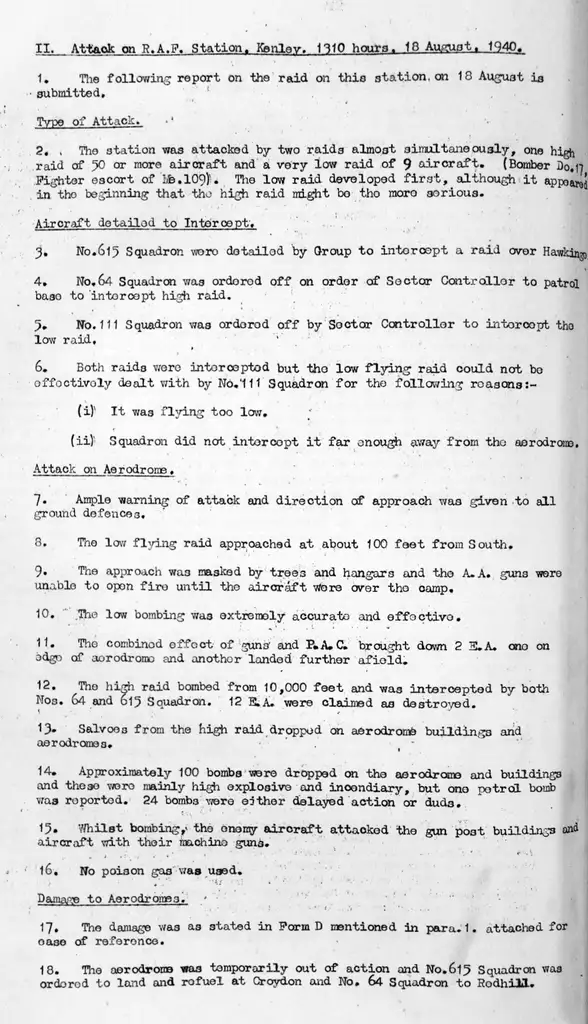
- Date
- 1940
- Catalogue reference
- AIR 41/16
This report, from the same Air Historical Branch document as the map of fighter defences in 1940, discusses the events and results of the attack on Kenley in more detail.
It summarises the attack and identifies the RAF squadrons that were sent to intercept the German bombers. There are some figures for the number of personnel killed and wounded, and the number of British aircraft destroyed or damaged.
Abbreviations used include:
AA: Anti-Aircraft
EA: Enemy Aircraft
PAC: Parachute and Cable (a device used to bring down enemy aircraft)
111 Squadron combat report
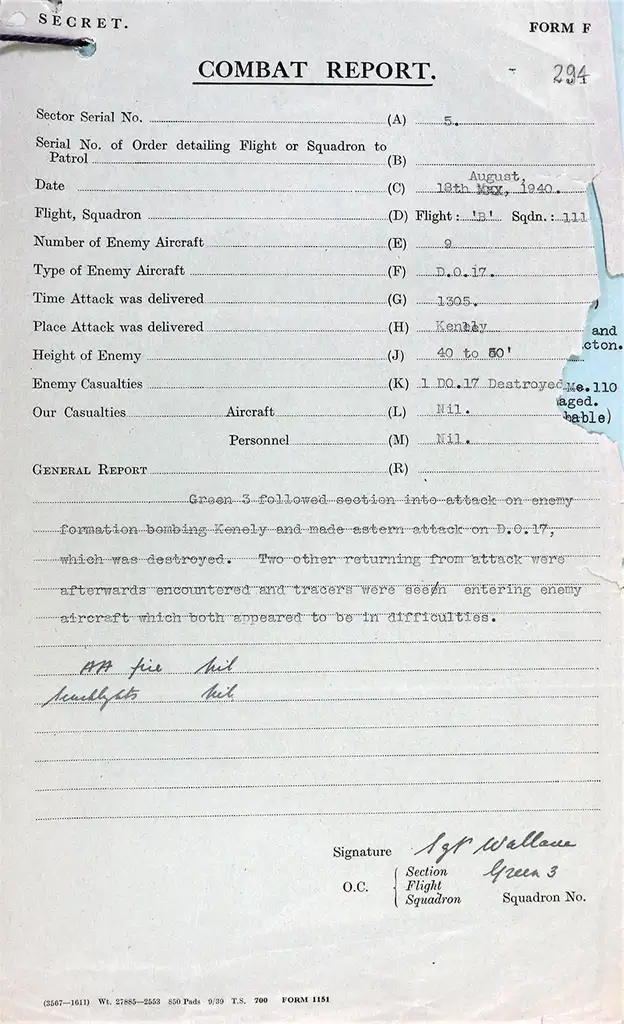
- Date
- August 1940
- Catalogue reference
- AIR 50/43/89
Aircrew including fighter pilots were required to complete a brief combat report after each engagement with enemy aircraft.
In this example, Sergeant Wallace of 111 Squadron flew in his Hurricane from the satellite airfield at Croydon and met the low-level bombers near Kenley. He included a short account of the action, identifying the German aircraft type, altitude and time of day.
Further combat reports for aircrew based in Britain are available to download from our catalogue. They can be found by searching for name of pilot, squadron and date.
Casualty reports from the Battle of Britain
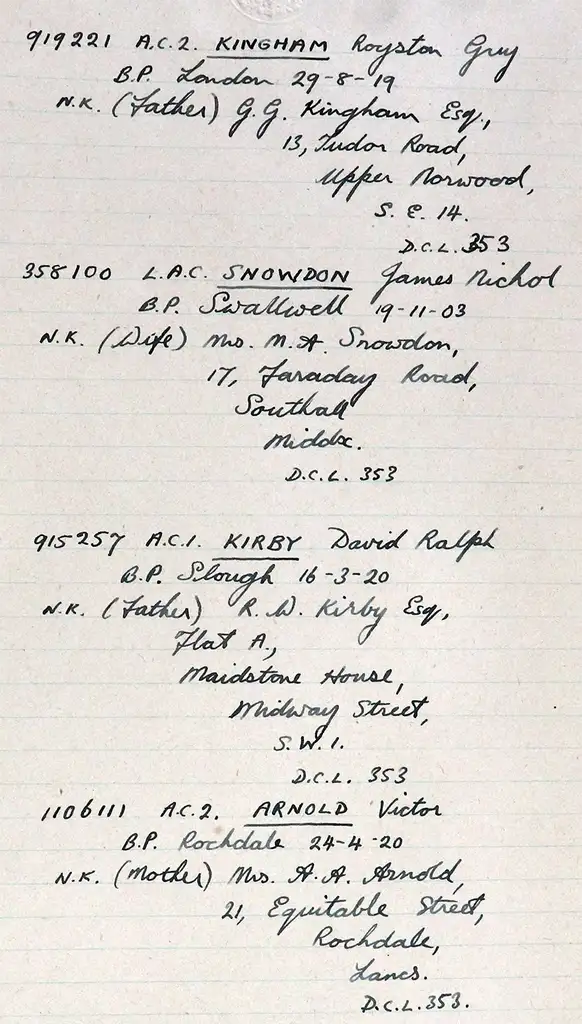
- Date
- 1940
- Catalogue reference
- AIR 81/3484
Some ground personnel and aircrew were killed and wounded in the attacks. This page is part of a casualty report and has a list of four of the wounded men who survived.
The document is part of a series of casualty investigation reports compiled during and after the war. They are fully indexed by name of personnel, aircraft type and location. Accidents are included as well.
Featured article
Record revealed
A dramatic plea for Churchill’s help from Bletchley Park
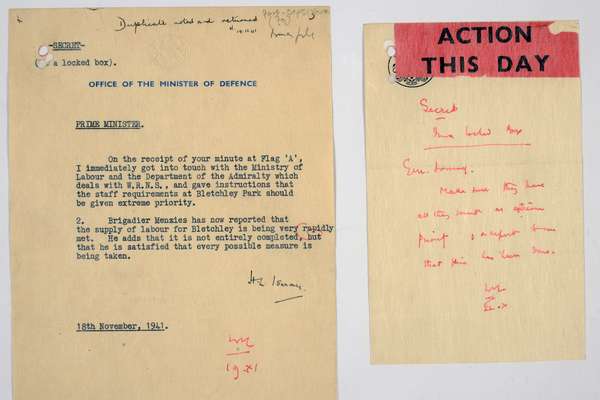
In 1941, four Government Code and Cypher School cryptanalysts, including Alan Turing, made a stunning appeal directly to Winston Churchill.